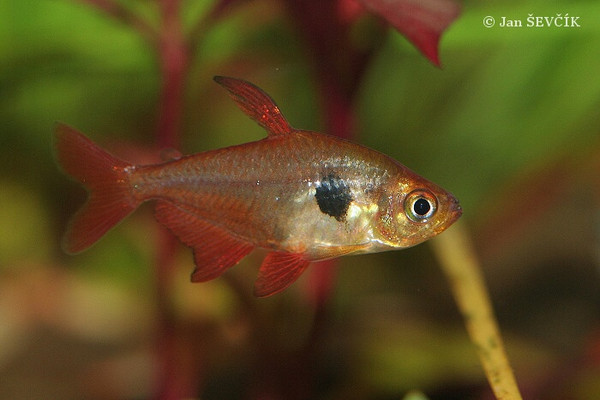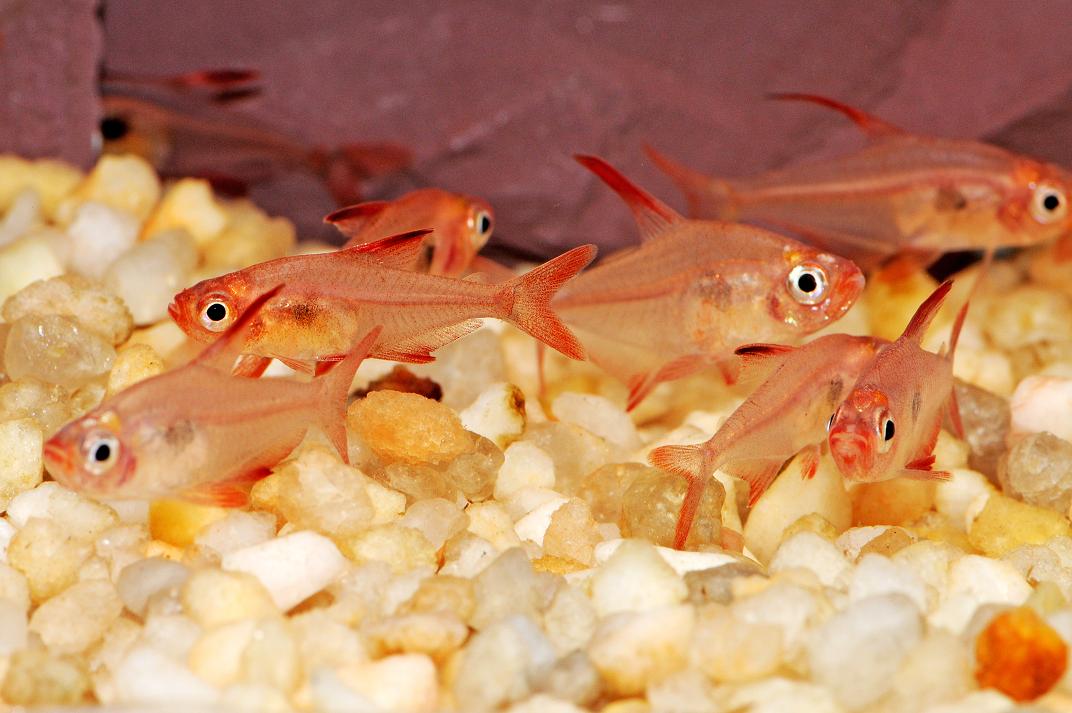
Most Tetras are omnivores and will thrive on high quality dried foods such as flakes, granules, wafers and pellets.

The best tank mates for Tetras include other Tetra species, Danios, Rasboras, appropriately sized Rainbowfish, smaller peaceful Barbs and Livebearers. Ensure you have a secure fitted lid on your aquarium to prevent them from jumping out, which they will do if they feel threatened or scared. If you have a well-decorated aquarium with a dark substrate, you will notice that you will accentuate your Tetra's colours. Tetras fare better if kept in schools of 6 or more individuals they will be less stressed and show their best colours. You can keep most Tetras in 35 to 90 Litre aquariums, but larger tanks are more accessible to take care of and provides them with more room to swim. Maintaining good filtration, having a nice flow of current and performing regular water changes is a must and make sure you remember to use a de-chlorinator if using tap water. Exceptions such as the Buenos Aires Tetra thrive in cooler water.

If you keep aquariums in rooms below 75 degrees Fahrenheit, it is advisable to use an aquarium Heater to maintain the correct temperature. For most Tetras, the temperatures should be between 75 degrees Fahrenheit to 80 degrees Fahrenheit the pH needs to be somewhere between 6.8 and 7.8 and the alkalinity between 6.8 and 7.8. Most Tetras are found in soft, acidic water in the wild however, most aquarium species sold today are raised commercially in water that frequently has a higher pH and alkalinity than their natural environments. Like the Buenos Aires Tetra, other Tetra species can get quite big and can be very active, which may intimidate more timid or smaller fish. Serpae Tetras, for example, can sometimes be a bit nippy, primarily when housed in insufficient numbers. Most Tetras are colourful, calm, relatively peaceful and least aggressive and will get along well with similarly sized community fish. Many live in regions with submerged vegetation and shaded areas. Each species of Tetra has its own specific distribution and range, though some species do overlay with the populations of others. Some live across broad areas, while others live in a single river system. Tetras live in a diversity of different regions. Tetras are endemic to South and Central America and Africa, with a considerable majority coming from the Amazon Basin, except for the blind cave tetra, which was discovered in a cave system in Mexico. Providing you take proper Care of your Tetra Fish, they can live for 5 to 10 years. Tetras can vary in size from 4 cm to 15 cm, although most Tetras available in the hobby are smaller. Species such as the Cardinal Tetra and Neon Tetra are among the most popular of all freshwater fish, adding a touch of social interaction andīrilliance to the community aquarium. These fish also have a small, fleshy adipose fin found between the caudal and dorsal fins. Additionally, Tetras have a long anal fin extending from a posterior of the dorsal fin and ending on the ventral caudal peduncle.

They commonly possess a tall dorsal fin and a homocercal caudal fin distinguished by a short connection to the fish's body. Tetras generally have compressed bodies and can be typically identified by their fins. Consequently, they are prevalent in home aquariums. A majority of these fish are also brightly coloured and easy to take care of in captivity. Many of these fish have several bones that join the swim bladder and inner ear, enhancing these colourful fishes hearing. Even though this adipose fin is generally considered the distinguishing feature, some Tetras, such as the Emperor Tetra, lack this feature. This adipose fin factors the fourth unpaired fin on these fish. Characidae can be recognised from other fish by their small adipose fin between the dorsal fin and tail. There are currently over 100 tetra species divided up between the three families.

Tetra is the well-known name of many small freshwater characiforms belonging to the biological family Characidae and its former subfamilies Lebiasinidae and Alestidae.


 0 kommentar(er)
0 kommentar(er)
